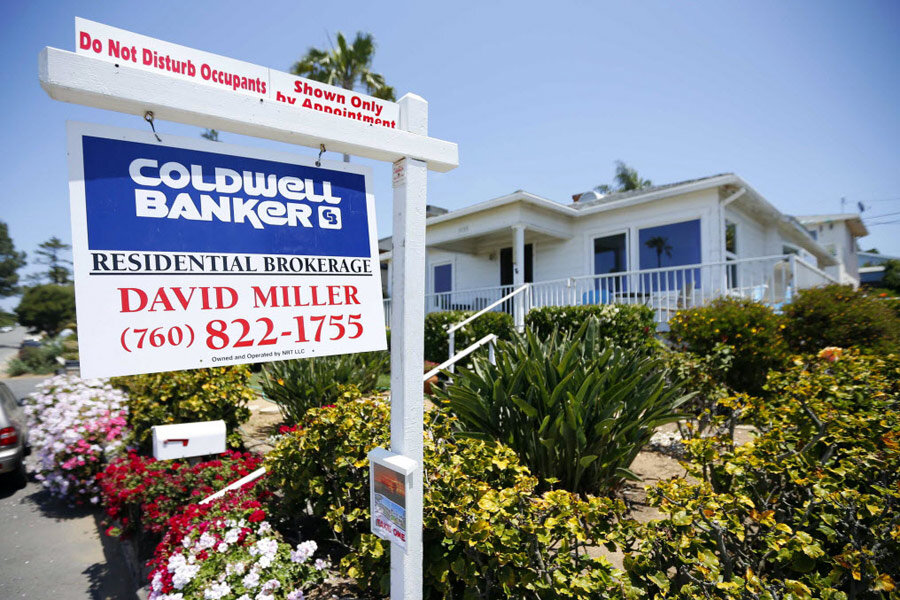Home prices up 10 percent: How strong is this year’s US housing market?
News of the first double-digit annual home price gain since 2006 raises a question: Just how blazing hot is the housing market?
Clearly a recovery has gathered some steam.
Home prices have been rising across all 20 US cities that are tracked by Standard & Poor’s/Case-Shiller indexes, and the widely watched Case-Shiller nationwide index shows home prices up 10.2 percent over the past four quarters.
That’s the first year-over-year rise of 10 percent or more since early 2006, according to quarterly Case-Shiller data released Tuesday.
Sales volume is also rising, the National Association of Realtors (NAR) reports. And according to Wednesday numbers from the firm CoreLogic, the inventory of homes in foreclosure is down 24 percent from a year ago.
All this news doesn’t mean a new housing bubble is under way, though.
Some housing market analysts offer words of caution against either giddiness or fear right now.
“In relation to incomes [or] rents ... US home prices still look low,” economist Ed Stansfield of Capital Economics writes. “Average US home prices are just three-quarters of their previous peak,” he says, adding that he expects that the pace of price gains “will moderate in the second half of this year.”
Here’s some context to put the recent trends in perspective:
Prices aren’t that high. As Mr. Stansfield points out, the average US home value is well below the bubble-era peak. In nominal terms (not adjusted for inflation), the Case-Shiller national index is down 28 percent compared with its peak in the second quarter of 2006.
Thanks to ultralow mortgage rates, buying a home is attractive in most markets, many economists say. An “affordability index” from the NAR has remained strong even as home prices have started to firm up.
Prices aren’t that low. The flip side of the coin is that the market isn’t cheap. Since 1890, according to research by Yale University economist Robert Shiller, home prices have tended to stay roughly constant after adjusting for inflation. Today’s average price actually looks a bit high compared with those century-long norms.
In at least some markets, the Case-Shiller indexes have more “boom” than “bust” in them. Los Angeles prices are up 86 percent from their 2000 level, and Washington, D.C., prices are up 90 percent. By contrast, the national index is up about 37 percent – about on a par with inflation during that time.
Mortgage rates won’t stay this low forever. The housing recovery has been fueled in good measure by the Federal Reserve's ease in monetary policy. The Fed’s low interest rates and bond-buying programs have brought interest rates – including on mortgages – to historic lows. That has helped revive housing demand after the bust both directly (by lowering the cost of borrowing) and indirectly (by helping the overall economy recover).
No one should expect the low rates to continue indefinitely, however. And when mortgage rates rise, that tends to push home prices down.
An upturn in mortgage costs is likely to be a years-long evolution. But signs of a potential shift are already emerging. A hot topic of speculation on Wall Street these days is when the Fed will begin to taper off its bond-buying effort, known as quantitative easing.
Sellers are coming back. Home prices have been rising in part because of a tight supply of homes for sale, relative to the number of would-be buyers. As prices tick up, however, more homeowners will shed the problem of being “underwater” (having mortgage balances larger than the value of their property).
Already, that trend may be helping the pool of sellers to expand. NAR data showed roughly 2.2 million homes for sale nationwide in April, the highest in seven months. If the for-sale inventory keeps rising, that could restrain any upward surge in home prices.






